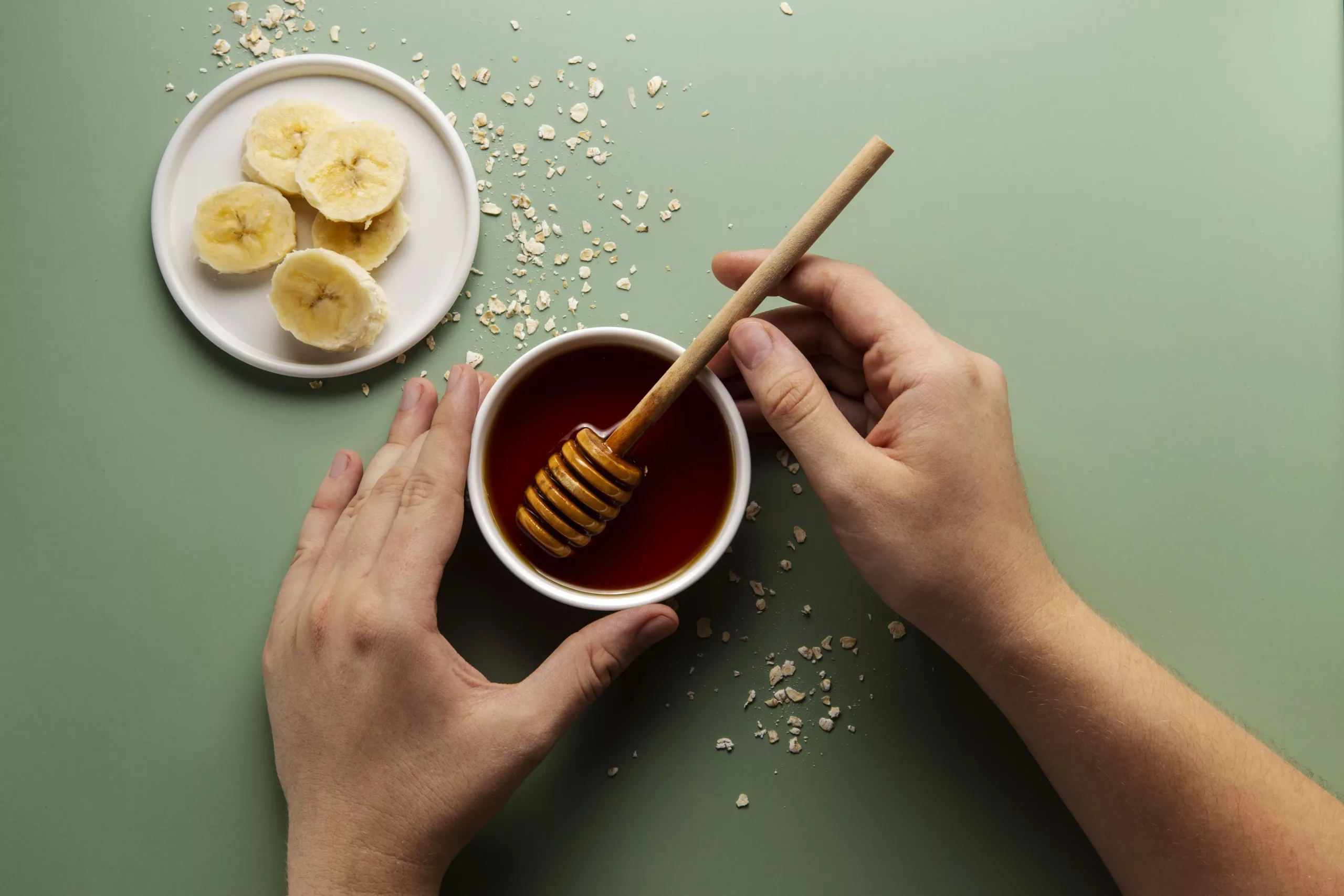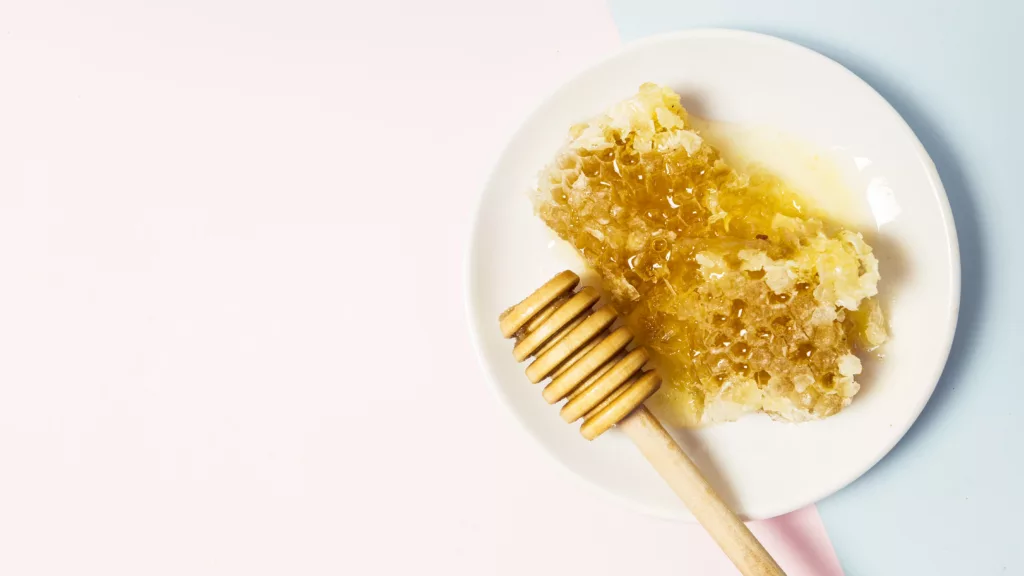How to Use Beeswax for Hair, Beards, and Dreads
Beeswax has been a trusted natural substance for centuries, cherished not only for its role in candles but also for its versatile benefits in haircare. Let’s uncover the wonders of beeswax and how it can revolutionize your hair, beard, or dreads routine.
What is Beeswax?
At its core, beeswax is a natural substance secreted by honeybees. This wax forms the structure of honeycombs in beehives and boasts a unique composition of esters, fatty acids, and long-chain alcohols.
Benefits of Beeswax for Hair
Moisturizing Properties: Beeswax acts as a natural emollient, locking moisture into each strand and preventing dryness. This helps maintain hair health, especially in harsh climates or for those with naturally dry hair.
Smoothing and Straightening Effects: Its consistency when heated and applied allows for the smoothing of unruly hair, aiding in straightening without harmful chemicals present in many straightening agents.
Sealing Strands for Protection: The wax forms a protective layer around hair strands, shielding them from environmental stressors like pollution and UV rays, thereby reducing damage5.
Promotion of Hair Growth: Beeswax stimulates hair follicles, promoting healthy hair growth while also preventing breakage and split ends.
Soothing Scalp Conditions: Its natural antibacterial properties can alleviate scalp irritations, providing relief from conditions like dandruff or itchiness.
Using Beeswax for Hair
Applying beeswax is a straightforward process. Warm a small amount between your palms until it softens, then distribute it evenly through damp or dry hair. For targeted scalp treatment, gently massage a small quantity into the affected areas.

Using Beeswax for Dreads
Dreadlocks, known for their distinct appearance, can benefit greatly from beeswax. The wax helps in binding and tightening hair strands, aiding in the formation and maintenance of clean, well-defined dreads.
How to Create Dreadlocks Using Beeswax
- Prepare Your Hair: Ensure your hair is clean and completely dry before starting the process.
- Section Your Hair: Divide your hair into sections using a comb or fingers, depending on the desired size and number of dreads.
- Apply Beeswax: Take a small amount of beeswax and rub it between your palms until it softens. Apply it to the sectioned hair, rolling and twisting each section to form the dreadlock.
- Maintain Regularly: Periodic maintenance with beeswax ensures the longevity and neatness of your dreadlocks.
Beeswax for Beards
Beard care enthusiasts have long appreciated beeswax for its role in crafting exquisite beard balms and waxes.
DIY Beard Balm Recipe
Crafting your beard balm infused with beeswax at home is a rewarding and straightforward process. Combine beeswax, shea butter, and essential oils in a double boiler, melt, and pour into a tin. Allow it to cool and solidify for a nourishing beard balm.
DIY Beard Wax Recipe
For those seeking more hold and sculpting capabilities, a DIY beard wax using beeswax, coconut oil, and a touch of pine resin can provide the perfect blend for styling.
Beeswax for Hair Removal
Interestingly, beeswax also finds its place in hair removal methods, offering a natural alternative to conventional techniques.
DIY Hair Removal with Beeswax
Creating your hair removal solution using beeswax involves melting the wax, applying it thinly to the skin using fabric strips, and swiftly pulling it off against hair growth for a clean, efficient removal method.
Downsides of Beeswax
While beeswax offers a myriad of benefits, it’s essential to be aware of potential downsides.
Waxy Buildup: Using excessive amounts or irregular cleansing can lead to waxy buildup, leaving hair feeling heavy and greasy.
Sticky Residue: Improper removal or application can result in sticky residue, causing discomfort and attracting dust and debris.
Managing Waxy Buildup and Sticky Residue
To combat these issues, it’s advisable to use beeswax sparingly and ensure thorough cleansing with a clarifying shampoo or apple cider vinegar rinse.
The Takeaway
Beeswax serves as a versatile natural solution for haircare, beard grooming, and even hair removal. Its manifold benefits, when used wisely, can transform your hair routine, offering nourishment, styling aid, and scalp care.
Beeswax Selection and Quality
When choosing beeswax for hair or beard care, opt for organic, unrefined beeswax to ensure purity and maximum benefits. Look for reputable suppliers or local beekeepers who provide high-quality, ethically sourced beeswax.
Hair Type Consideration
Understanding your hair type is crucial when using beeswax. While it offers remarkable benefits, individuals with fine or easily weighed-down hair might prefer lighter alternatives or using beeswax sparingly to avoid buildup.
Removing Beeswax from Hair
Thoroughly cleansing hair is essential to prevent waxy buildup. Using a clarifying shampoo or an apple cider vinegar rinse can effectively remove excess beeswax without stripping the hair of its natural oils.
Safety and Sensitivity
Before using beeswax for hair removal or any application directly on the skin, conduct a patch test to ensure you don’t have any adverse reactions or allergies to the product.
Sustainability and Eco-friendliness
Beeswax, sourced ethically and sustainably, contributes to environmental conservation and supports bee populations. It’s a natural, renewable resource that doesn’t involve harsh chemical processing, aligning with eco-conscious grooming practices.
Seeking Professional Advice
For individuals with specific scalp conditions or concerns about using beeswax, consulting a dermatologist or hair care professional is advisable. They can offer tailored advice and recommendations for your unique hair needs.
Storage and Shelf Life
Proper storage in a cool, dry place ensures the longevity of beeswax. Stored correctly, it maintains its quality for an extended period, making it a cost-effective and reliable addition to your grooming regimen.
RELATED ARTICLE : EXCEDRIN MIGRAINE VS EXTRA STRENGTH
Conclusion
In the realm of natural grooming, beeswax emerges as a multifaceted ally, offering an array of benefits for hair, beard, and even dread care. Its innate moisturizing properties, protective capabilities, and versatility make it a sought-after ingredient in the realm of grooming products.
Whether you seek to nurture your locks, sculpt your beard, or fashion clean dreadlocks, beeswax stands as a reliable, natural solution. From its ability to lock in moisture to aiding in hair growth and scalp health, its applications are diverse and effective.
However, like any natural product, understanding its nuances and using it judiciously is crucial. Avoiding buildup, ensuring proper cleansing, and considering individual hair types are pivotal for reaping the rewards of beeswax without encountering its potential drawbacks.
Embrace the natural allure of beeswax, explore its DIY potentials, and relish the nurturing effects it brings to your grooming routine. Whether you’re fostering a new hairstyle, caring for your beard, or seeking an eco-friendly hair removal alternative, beeswax stands as a testament to nature’s prowess in grooming.
Harness its benefits wisely, consult professionals for specific concerns, and enjoy the nourishing touch beeswax brings to your hair and grooming rituals.
How to remove beeswax from hair
One of the easiest ways to remove beeswax that has built up in your hair is with slightly warm olive oil. Apply the oil to your hair and let it soak for a few minutes. Then wash your hair with dish soap to remove any remaining grease. Follow with a moisturizing shampoo and conditioner combo.
Frequently Asked Questions (FAQs)
- What makes beeswax beneficial for hair and beard care?Beeswax boasts natural moisturizing properties, aids in sealing strands, promotes hair growth, and soothes scalp conditions, making it a versatile ingredient for hair and beard care routines.
- Can beeswax cause buildup in hair or beard?Yes, excessive use or inadequate cleansing can lead to waxy buildup, making hair or beard feel heavy or greasy. Proper cleansing with clarifying shampoos helps prevent this.
- Is beeswax suitable for all hair types?While beneficial for many, individuals with fine or easily weighed-down hair might prefer lighter alternatives to avoid potential buildup. However, using beeswax sparingly can still offer benefits.
- How can I remove beeswax from my hair or skin?Thorough cleansing with clarifying shampoos or natural rinses helps remove beeswax from hair. For skin, applying warm water or oil can help dissolve and remove it effectively.
- Are there any allergy concerns with using beeswax directly on the skin?Patch testing is crucial before direct application to the skin to ensure no allergic reactions. If uncertain, consult a dermatologist.
- Can beeswax help in forming and maintaining dreadlocks?Absolutely! Beeswax aids in binding and tightening hair strands, making it a valuable tool in forming and maintaining clean, well-defined dreadlocks.
- How do I create a DIY beard balm using beeswax?Crafting a nourishing beard balm involves combining beeswax, shea butter, and essential oils in a double boiler, then allowing it to cool and solidify for use.
- What is the shelf life of beeswax?Properly stored in a cool, dry place, beeswax can maintain its quality for an extended period, often up to several years.
We include products we think are useful for our readers. If you buy through links on this page, we may earn a small commission. Here’s our process.
How we vet brands and products
Healthline only shows you brands and products that we stand behind.Our team thoroughly researches and evaluates the recommendations we make on our site. To establish that the product manufacturers addressed safety and efficacy standards, we:
Evaluate ingredients and composition: Do they have the potential to cause harm?
Fact-check all health claims: Do they align with the current body of scientific evidence?
Assess the brand: Does it operate with integrity and adhere to industry best practices?
We do the research so you can find trusted products for your health and wellness.
Read more about our vetting process.





